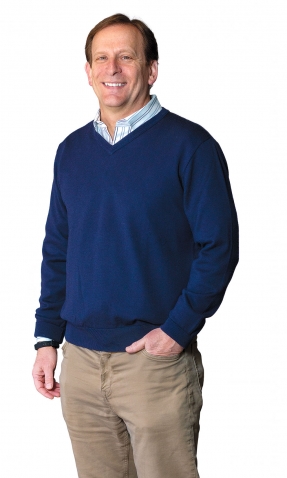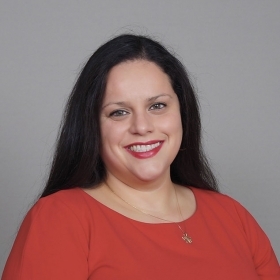Photo by Lisa Abitbol
Near the start of the COVID-19 pandemic, Phillip Levine, Katharine Coman and A. Barton Hepburn Professor of Economics, and a colleague at the University of Maryland fielded calls from journalists about the impending baby boom. “We said, ‘What?’” says Levine.
Reporters went on to explain that, according to conventional wisdom, couples isolating at home could only watch Netflix and engage in new pandemic hobbies for so long before their attention wandered elsewhere. One thing would lead to another, and soon after, the U.S. would see another baby boom.
During one call, “within half a second, I start laughing,” says Levine, whose work focuses on applying statistical methods to social issues like abortion and teen childbearing, including analyzing MTV’s show 16 and Pregnant. “I said, ‘I think that’s not going to happen. It’s going to be the opposite. We’re going to have a baby bust.’”
Levine and fellow economics professor Melissa Kearney set out to quantify their hunch, delving into the data. First, they looked at figures from all 50 states during the Great Recession between 2007 and 2009 to understand the relationship between labor market conditions and fertility.
They found that every percentage point increase in the jobless rate tends to translate into a 1% drop in births. What’s more, economies don’t recover quickly from recessions, and even when recessions end and people do return to work, many do so at lower-paying jobs, which add to a delay in births.
Next, Levine and Kearney tapped into numbers from the Spanish flu of 1918. Nine months after each of that epidemic’s three distinct spikes in deaths, births plummeted. Surveys in 2020 also showed less sexual activity during COVID-19 particularly among women who already had children—and fewer people were searching Google for pregnancy-related terms like “pregnancy test,” “ultrasound,” and “morning sickness.”
“For people who already have kids at home, the concept of having another one now is just mind-boggling because it’s so difficult making it through on a daily basis,” Levine says.
Levine and Kearney published their findings in a Brookings Institution research report last June, finding that the public-health crisis and the ensuing recession could lead to 300,000 to 500,000 fewer births in 2021. The real number may be closer to 300,000, Levine says, since the labor market has improved more than expected.
Still, he also wouldn’t be surprised if the figure is higher. “There are things that we don’t have a historical precedent for,” he says. For example, even more births might be delayed because single people can’t easily form relationships during COVID-19. School closings and limited child care also likely have an impact. Those factors can’t be quantified.
If a decline of 300,000 in a society of over 300 million people were a one-off, Levine says, he wouldn’t be too concerned. “If that were the end of it, it’s not that big of a deal in the big picture,” he says. But the projected drop comes on the heels of what’s already been a large decline in fertility in the U.S. Births peaked in 2007 and have fallen ever since, by 550,000 per year from 2007 to 2019.
“Now, we’re talking about very large declines,” Levine says, “with very significant implications for society for years to come.”
In the midst of a baby bust, children in the U.S. would have fewer siblings. Class sizes could shrink in five to six years, and college enrollment as a whole could wither a dozen years after that. The labor force would contract, perhaps requiring the country to lean more on technology—and fewer people would contribute to Social Security.
Other countries that have grappled with a falling birth rate—Australia, Japan, and Finland, for example—have attempted to fix the problem through a variety of pro-natal policies, including child-care subsidies and extended parental leave, but they’ve been largely unsuccessful in giving a significant boost to birth rates.
One surefire solution for the U.S. would be to loosen its immigration policies. “In reality, that’s the simplest solution,” Levine says. “But the minefield we have to get through to enact those sorts of policies is overwhelming.”







We ask that those who engage in Wellesley magazine's online community act with honesty, integrity, and respect. (Remember the honor code, alums?) We reserve the right to remove comments by impersonators or comments that are not civil and relevant to the subject at hand. By posting here, you are permitting Wellesley magazine to edit and republish your comment in all media. Please remember that all posts are public.